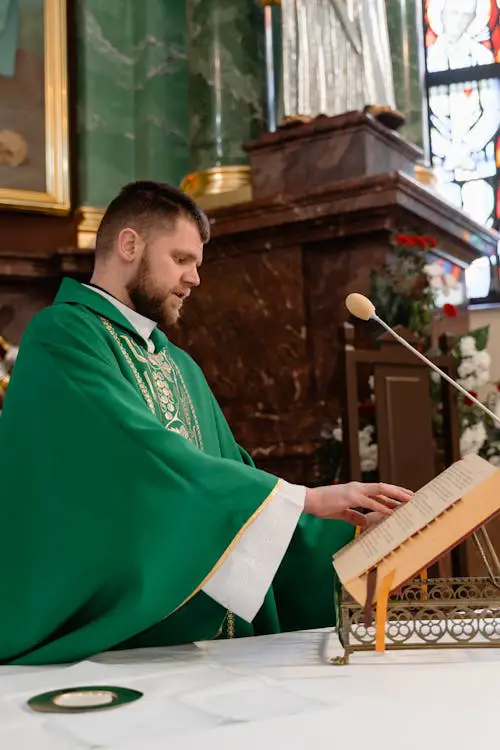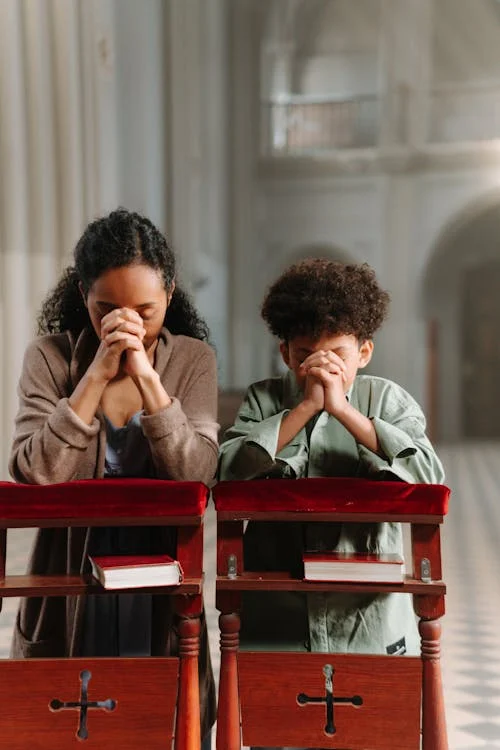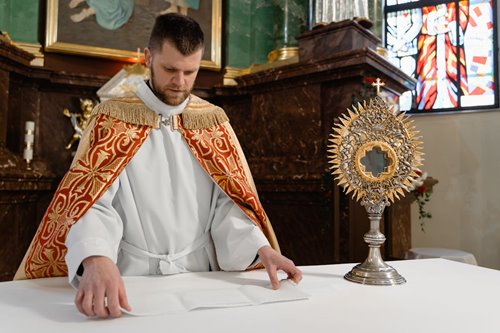
The Catholic Church, with its rich history crossing north of two centuries, is one of the most seasoned and most compelling foundations on the planet. While many are know all about its center convictions and practices, there are a few less popular realities about the Catholic Church that might shock even the most sincere supporters.
The Vatican’s Mystery Files:
The Vatican is home to a huge assortment of verifiable reports, known as the Vatican Secret Files. As opposed to mainstream thinking, the expression “secret” doesn’t suggest a vile nature yet rather alludes to the way that the documents are private and not available to the general population without legitimate approval. They contain important compositions, ecclesiastical correspondence, and authentic records going back hundreds of years.
The Sacred See’s Discretionary Relations:
The Blessed See, the focal administering body of the Catholic Church, keeps up with conciliatory relations with more than 180 nations around the world. It is perceived as a sovereign substance and can go into formal arrangements, arrange deals, and send ministers to different countries.
The Littlest Country On the planet:
The Vatican City, a free city-state inside Rome, is the littlest perceived country on the planet. With an area of only 44 hectares (110 sections of land), it is home to around 800 inhabitants, including the Pope, who fills in as the head of state.
The Swiss Gatekeeper:

The Swiss Watchman, known for their particular Renaissance-period garbs, is the most established standing armed force on the planet. Laid out in 1506, their essential obligation is to safeguard the Pope and the Vatican City. The Swiss Watchman’s set of experiences, customs, and thorough preparation make them a novel and notorious presence in the Catholic Church.
The Most seasoned Constantly Working College:
The College of Bologna, established in 1088, is the most seasoned persistently working college on the planet. It was laid out by the Catholic Church and stays a regarded instructive establishment right up ’til now.
The Height of Holy people:
The height of holy people, otherwise called canonization, is a critical cycle inside the Catholic Church by which people are perceived and proclaimed to be holy people, excellent models of Christian prudence and blessedness. The cycle includes cautious examination, assessment of their life and works, and the acknowledgment of wonders credited to their mediation.
The course of canonization commonly starts at the neighborhood level, where the life and ethics of an individual are inspected by a diocesan minister. The up-and-comer is alluded to as a “Worker of God” during this underlying stage. An intensive examination is led, including the survey of compositions, declarations, and any potential supernatural occurrences related with the competitor. Assuming the priest discovers that there is adequate proof of sacredness and gallant prudence, the reason is sent to the Vatican’s Assemblage for the Reasons for Holy people.
At the Gathering, the up-and-comer is alluded to as a “Respected.” A group of scholars and specialists looks at the competitor’s life, compositions, and excellencies more meticulously. This examination intends to affirm the individual’s standing for blessedness and decide whether they carried on with an existence of brave ethicalness. On the off chance that the Gathering supports the discoveries, they present the contender to the Pope for beatification.
Beatification is the subsequent stage all the while and presents the title of “Favored” upon the competitor. It connotes that the individual genuinely deserve love and can be openly respected in unambiguous areas or networks. To continue with beatification, the affirmation of a supernatural occurrence credited to the competitor’s intervention is required. This supernatural occurrence is regularly a marvelous recuperating that can’t be made sense of by normal causes and happens after the up-and-comer’s passing. The marvel is entirely examined by clinical experts and scholars to guarantee its legitimacy and association with the competitor’s mediation.
In the event that the Pope endorses the beatification, the competitor is pronounced “Honored” in a public function. Notwithstanding, to be perceived as a holy person, the statement of a subsequent wonder is essential. The cycle for researching the subsequent marvel is like that of the first. When the subsequent wonder is affirmed, the Pope can continue with the canonization.
During the canonization function, the Pope officially proclaims the contender to be a holy person and adds their name to the rundown of perceived holy people. The holy person’s dining experience day is laid out, and they are introduced to act as an illustration of heavenliness and mediation for the devoted. Canonization is a reliable demonstration of the Pope, certifying that the individual is within the sight of God and can be adored and summoned by the unwavering.
The rise of holy people inside the Catholic Church is a careful and thoroughly assessed process. It looks to distinguish people who have carried on with lives of exceptional blessedness and whose mediation has been related with supernatural occurrences. By perceiving these holy people, the Church offers models of righteousness, mediators, and motivations for the devoted to develop their own profound excursions and look for fellowship with God.
The Vatican Galleries:
The Vatican Exhibition halls are an assortment of workmanship displays and galleries situated inside Vatican City, the sovereign region of the Catholic Church. They are among the world’s most famous and broad workmanship assortments, lodging a huge range of magnum opuses and curios traversing different verifiable periods and societies.
The historical backdrop of the Vatican Exhibition halls traces all the way back to the mid sixteenth century when Pope Julius II started gathering and showing show-stoppers inside the Vatican Royal residence. Throughout the long term, ensuing popes kept on extending the assortments, adding critical fine arts and fortunes procured through support, gifts, and archeological unearthings.
Today, the Vatican Historical centers envelop a huge complex of displays, lobbies, and presentation spaces, offering guests a different scope of imaginative and social encounters. One of the most well known regions is the Sistine Church, famous for its amazing frescoes by Michelangelo, including the notorious roof portraying scenes from the Book of Beginning and the Keep going Judgment on the special stepped area wall.
The galleries additionally include the Raphael Rooms, which grandstand the wonderful frescoes painted by Raphael and his studio. These rooms were initially expected as confidential lofts for Pope Julius II yet are presently open to general society, showing Raphael’s mind blowing imaginative vision.
Notwithstanding these eminent features, the Vatican Exhibition halls house various different assortments. The Egyptian Historical center contains antiquated Egyptian curios, including mummies, papyri, and sculptures. The Gregorian Egyptian Gallery shows a scope of archeological finds from Egypt, including models, reliefs, and stone coffins.
The Exhibition of Guides is one more eminent segment, including a progression of luxurious guides portraying the Italian districts and ecclesiastical regions during the sixteenth hundred years. The Pinacoteca Vaticana shows a broad assortment of canvases from different periods, including works by craftsmen like Caravaggio, Leonardo da Vinci, and Raphael.
The Vatican Galleries likewise incorporate an assortment of contemporary strict craftsmanship, ethnological and anthropological curios, and assortments of coins, decorations, and ecclesiastical formal attire.
The galleries serve as stores of workmanship and culture as well as instructive and research organizations. Researchers and analysts approach the immense library and chronicles, which contain significant compositions, authentic archives, and early printed books.
The Vatican Galleries draw in large number of guests every year, who come to appreciate the wealth and variety of the assortments. The income produced from ticket deals adds to the upkeep and protection of the craftsmanships, as well as financing magnanimous drives upheld by the Catholic Church.
All in all, the Vatican Historical centers are a gold mine of craftsmanship and culture possessed by the Catholic Church. They house a broad assortment of show-stoppers and curios, spreading over various authentic periods and societies. The exhibition halls give an open door to guests to encounter the magnificence and meaning of these craftsmanships while adding to the safeguarding and backing of the Church’s social legacy.
The Job of Ladies in the Church:

The job of ladies in the Catholic Church is a point that has been the subject of progressing conversation and discussion. While ladies can’t be appointed as ministers inside the Catholic Church, they play played critical parts over now is the ideal time and keep on adding to its otherworldly, instructive, and regulatory undertakings.
One significant job that ladies have held is that of strict sisters. Strict sisters subscribe to an existence of petition, administration, and devotion to God and the Church. They take part in different services, like schooling, medical care, social work, and peaceful consideration. From the beginning of time, strict sisters have been instrumental in spreading the message of the Gospel and offering fundamental types of assistance to those out of luck.
Ladies play likewise played significant parts in administrative roles inside strict orders. They have filled in as bosses and abbesses, managing the administration and course of strict networks. These ladies have settled on significant choices, directed the profound arrangement of their networks, and added to the general mission of the Church.
In the area of philosophy, ladies have made critical commitments as researchers, scholars, and savvy people. Their bits of knowledge and viewpoints have advanced the philosophical talk and extended the comprehension of the confidence. Numerous Catholic colleges and instructive establishments utilize ladies as teachers and scientists in philosophy and related fields.
Moreover, ladies hold different authoritative and peaceful jobs inside the Church. They act as heads of strict schooling, peaceful partners, and facilitators of services. They add to the preparation and execution of ceremonial festivals, strict instruction projects, and effort drives. Ladies likewise take part effectively in lay developments and associations, cultivating profound development and local area commitment.
Pope Francis has accentuated the significance of ladies’ commitments to the existence of the Church. He has required a more noteworthy consideration and acknowledgment of ladies’ voices and gifts, focusing on the requirement for their dynamic presence in dynamic cycles. The Pope has delegated ladies to key situations inside Vatican divisions and laid out a commission to concentrate on the chance of ladies filling in as ministers.
In any case, there are continuous conversations and discussions inside the Catholic Church with respect to the potential for extending ladies’ jobs and obligations. Some promoter for the appointment of ladies as ministers, while others stress the requirement for more extensive roads for ladies’ initiative and dynamic inside the Church.
All in all, while ladies can’t be appointed as ministers in the Catholic Church, they have played and keep on assuming basic parts in different limits. Ladies have filled in as strict sisters, scholars, researchers, pioneers inside strict orders, and in regulatory and peaceful jobs. Their commitments are fundamental for the life and mission of the Church, and there are progressing conversations and endeavors to additionally recognize and extend their jobs inside the Church’s designs.
The Principle of Ecclesiastical Faultlessness:
The precept of ecclesiastical reliability is an unmistakable conviction inside the Catholic Church that states the Pope’s resistance from blunder while talking ex cathedra, and that signifies “from the seat” of Peter. This precept, officially characterized at the First Vatican Board in quite a while, that under unambiguous conditions, the Pope is supernaturally safeguarded from making blunders in issues of confidence and ethics.
It is significant to comprehend the particular circumstances under which ecclesiastical dependability applies. The Pope, first and foremost, should be talking ex cathedra, making a grave statement as the preeminent pontiff on issues of principle or moral lessons. It isn’t material to each assertion or activity made by the Pope. Furthermore, the educating should relate to issues of confidence or ethics that are restricting on all adherents. The Pope can’t guarantee reliability on issues inconsequential to confidence and ethics, like logical or verifiable realities.
The principle of ecclesiastical faultlessness is grounded in the Catholic faith in the Essence of God’s direction and assurance of the Church’s magisterium, which is the showing authority of the Church. It is viewed as a sign of the Church’s solidarity and the Pope’s job as the replacement of St. Peter, whom Catholics accept was given a unique authority by Jesus Christ.
The utilization of ecclesiastical faultlessness is uncommon throughout the entire existence of the Catholic Church. It has been summoned a couple of times, and the most striking occurrences remember the creed of the Flawless Origination for 1854 and the doctrine of the Supposition of Mary in 1950. In the two cases, the Pope, acting in his job as the preeminent educator of the Church, made statements that these lessons were dependable and restricting on all Catholics.
The regulation of ecclesiastical faultlessness has been a subject of discussion and misconception, both inside and outside the Catholic Church. Pundits contend that it puts an unnecessary accentuation on the Pope’s power and subverts the significance of the aggregate insight of the Church. Nonetheless, defenders contend that ecclesiastical faultlessness is a shield that guarantees the Church’s solidarity and safeguards fundamental regulations from blunder.
It is essential to take note of that ecclesiastical reliability doesn’t imply that the Pope is by and by dependable in all matters or that he has exceptional information or astuteness. Rather, it is a conviction that, under unambiguous circumstances, the Pope is safeguarded by the Essence of God from making blunders while characterizing matters of confidence and ethics for the general Church.
All in all, the precept of ecclesiastical dependability is an honest, particular conviction inside the Catholic Church that states the Pope’s resistance from blunder in issues and ethics while talking ex cathedra. It is a complex and nuanced regulation that is restricted in its extension and application. While bantered by some, it is a fundamental part of Catholic instructing viewing the Pope’s job as the replacement of St. Peter and the Church’s instructing authority.
The Catholic Church and Science:
The connection between the Catholic Church and science is a complex and nuanced one, formed by verifiable, social, and religious elements. While there have been occurrences of contention and debate, it is essential to perceive that the Catholic Church has a long history of supporting and empowering logical request.
Over time, the Catholic Church has made critical commitments to logical information and headways. Numerous unmistakable researchers have been Catholic church or strict researchers. For instance, Gregor Mendel, an Augustinian priest, directed momentous trials on hereditary qualities that established the groundwork for the cutting edge comprehension of heredity. His work on pea plants shaped the premise of the laws of legacy. The Church upheld Mendel’s examination as well as perceived its importance.
Another outstanding figure is Georges Lemaître, a Belgian minister and physicist who proposed the hypothesis of the Enormous detonation, which makes sense of the starting points of the universe. Lemaître’s work was at first met with suspicion, however the Church in the end embraced his hypothesis, seeing it as viable with the idea of creation ex nihilo (creation from nothing) and as proof of God’s hand in the universe’s development.
The Catholic Church has additionally settled various instructive establishments, including colleges, that play played crucial parts in logical revelations. For example, the Jesuits, a request inside the Catholic Church, have a long custom of logical examination and instruction. They have established and worked many regarded instructive foundations, like the Gregorian College in Rome and Georgetown College in the US, where logical request is empowered and upheld.
In any case, it is essential to recognize that the Church’s relationship with science has not forever been smooth. There have been occurrences in history where certain logical speculations conflicted with winning religious convictions, prompting clashes and contentions. Maybe the most notable model is the situation of Galileo Galilei, an Italian cosmologist who confronted judgment from the Church for advancing the heliocentric model of the nearby planet group, which went against the predominant geocentric view at that point. It is significant that the Church’s position on Galileo has advanced, and lately, there have been endeavors to accommodate and recognize his commitments to science.
In later times, the Catholic Church has effectively drawn in with logical turns of events, especially in regions like bioethics and ecological stewardship. Pope Francis, in his encyclical “Laudato Si’,” featured the earnestness of tending to environmental change and the requirement for biological obligation. The Catholic Church perceives the significance of logical exploration in understanding and tending to the difficulties that mankind faces.
All in all, the connection between the Catholic Church and science is complex. While there have been examples of contention and debate, the Church has a long history of supporting logical request, encouraging logical instruction, and perceiving the commitments of researchers. The Church’s commitment with science keeps on developing, with a developing accentuation on interdisciplinary exchange and an appreciation for the job of logical examination in tending to contemporary difficulties.
End:
The Catholic Church, with its well established customs and worldwide impact, holds various less popular realities that add profundity to its set of experiences and social importance. Investigating these realities not just reveals insight into the Church’s accomplishments and commitments yet in addition features its continuous advancement and importance in the cutting edge world.

